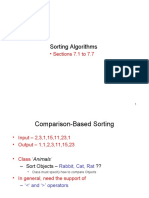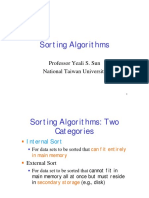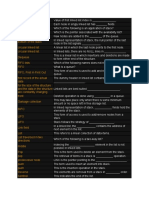0% found this document useful (0 votes)
32 views13 pagesQuick Sort and Linked List Operations
The document discusses the quicksort algorithm, highlighting its advantages over merge sort, such as in-place sorting and average-case efficiency of O(n log n). It also covers the importance of choosing a good pivot and the implications of using randomized pivots to avoid worst-case scenarios. Additionally, it compares lists and arrays in Python, explaining their implementations and performance characteristics.
Uploaded by
Harshdeep SharmaCopyright
© © All Rights Reserved
We take content rights seriously. If you suspect this is your content, claim it here.
Available Formats
Download as PDF, TXT or read online on Scribd
0% found this document useful (0 votes)
32 views13 pagesQuick Sort and Linked List Operations
The document discusses the quicksort algorithm, highlighting its advantages over merge sort, such as in-place sorting and average-case efficiency of O(n log n). It also covers the importance of choosing a good pivot and the implications of using randomized pivots to avoid worst-case scenarios. Additionally, it compares lists and arrays in Python, explaining their implementations and performance characteristics.
Uploaded by
Harshdeep SharmaCopyright
© © All Rights Reserved
We take content rights seriously. If you suspect this is your content, claim it here.
Available Formats
Download as PDF, TXT or read online on Scribd
/ 13























































































